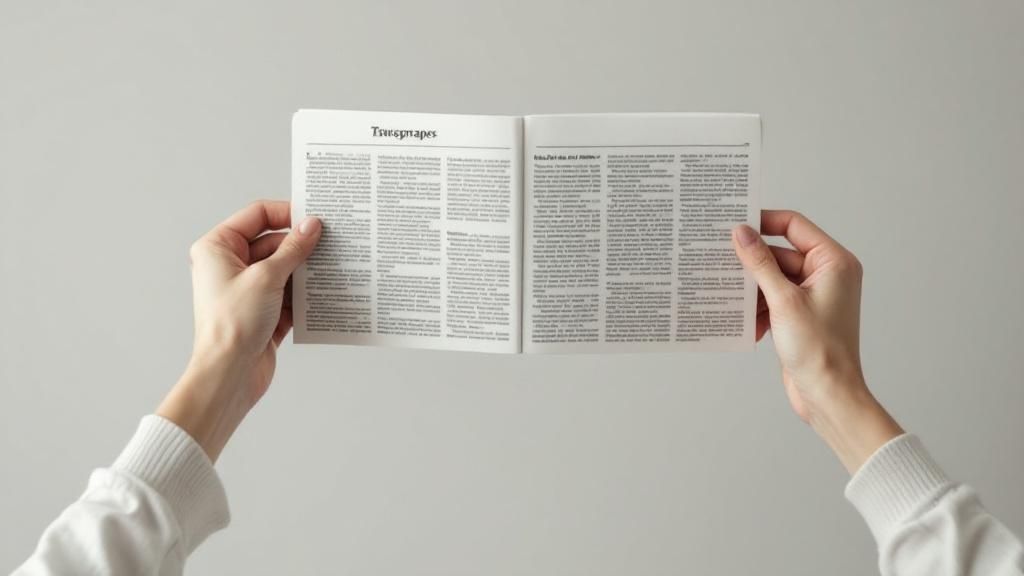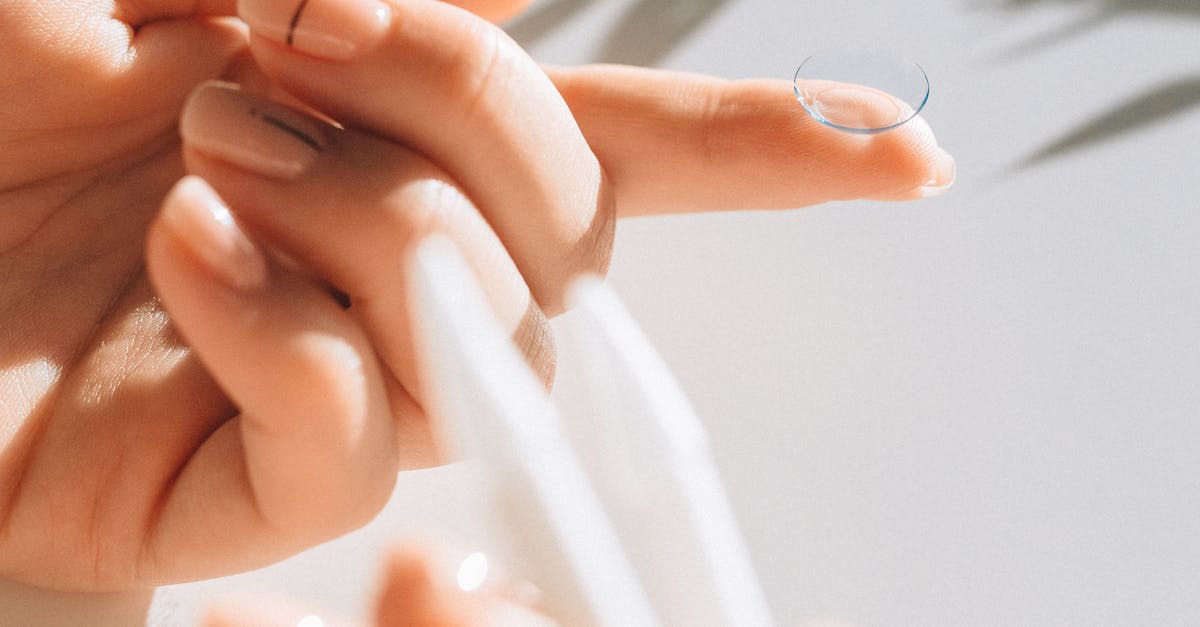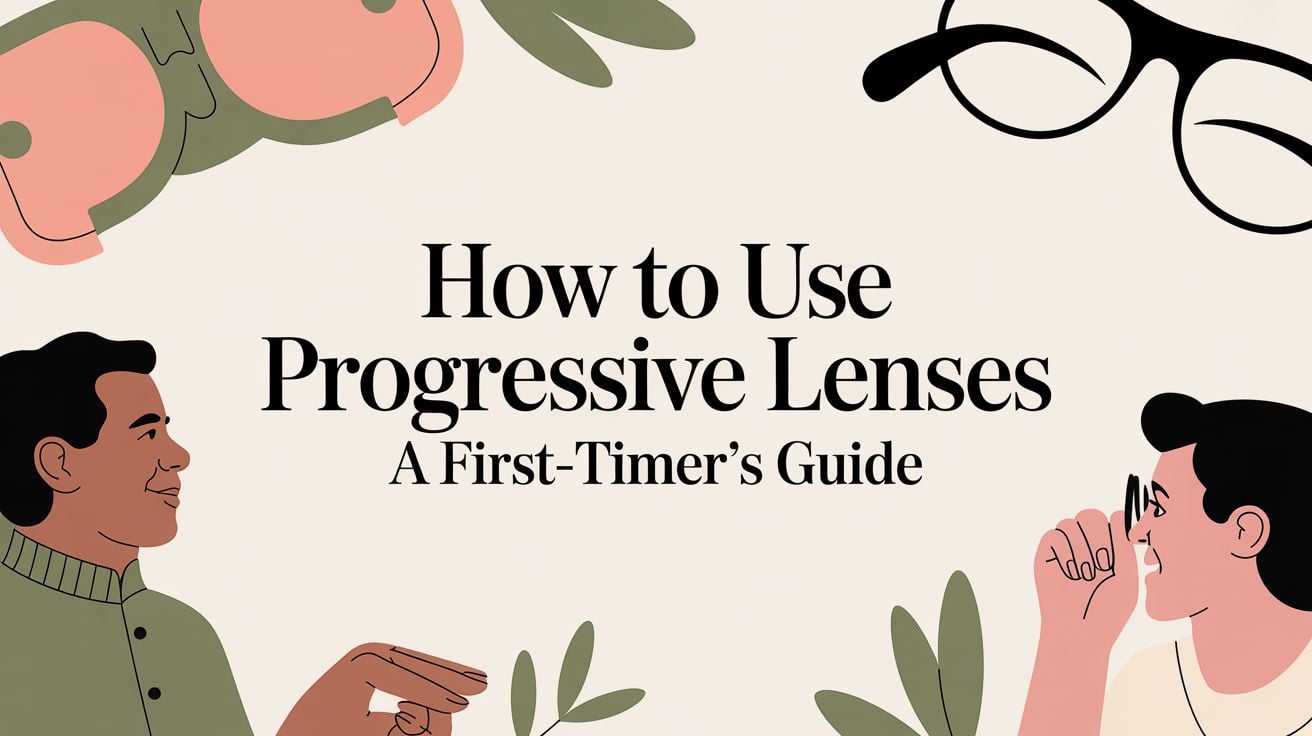Are you finding yourself holding your phone at arm’s length or squinting at menus in Glendale Heights restaurants? These subtle struggles are more than just minor annoyances; they are often the first signs you need reading glasses. For many in our Glendale Heights community, these changes begin to creep in around age 40. This condition, known as presbyopia, is a natural part of aging where the eye’s lens becomes less flexible, making it difficult to focus on close objects.
Recognizing these symptoms early is crucial for maintaining your quality of life, whether you’re navigating North Avenue traffic or reading reports for work. Ignoring them can lead to unnecessary eye strain, fatigue, and even headaches that interfere with your daily activities.
At iDoctor, a premier optometry boutique located conveniently in Glendale Heights, we specialize in helping our community see clearly. This guide will walk you through the seven most common indicators that it might be time to schedule one of our detailed eye exams in Glendale Heights. We’ll provide actionable insights to help you identify these signs and understand the next steps toward finding the perfect pair of designer reading glasses from brands like Tom Ford or Cartier.
1. Sign #1: Difficulty Reading Small Print (The Classic Symptom)
Does the menu at your favorite Glendale Heights restaurant suddenly seem blurry? Are you holding your phone at arm’s length just to read a text message? This struggle with small print is the quintessential sign that you might need reading glasses, and it’s often the very first change people notice. This experience, known as presbyopia, is a normal, age-related process.

Inside your eye, a natural lens, called the crystalline lens, flexes to focus on objects at different distances. As we age, this lens gradually becomes harder and less flexible. This reduced elasticity makes it increasingly difficult for the eye to focus on things up close, from the ingredient list on a grocery package to the fine print on a medication bottle. This is why holding things farther away helps; it compensates for the lens’s inability to focus properly at a normal reading distance.
What to Look For in Your Daily Life
Recognizing this sign is the first step toward clearer vision. It often appears subtly and then becomes more pronounced. Common scenarios include:
- The Arm’s Length Test: You find yourself extending your arms to read a book or newspaper. If the text becomes clearer the farther you move it away, it’s a classic indicator of presbyopia.
- Needing More Light: You might instinctively reach to turn on a lamp or use your phone’s flashlight to read a menu in a dimly lit restaurant. Brighter light can constrict your pupils, which increases your depth of focus and can temporarily help you see print more clearly.
- Digital Device Difficulty: Squinting to read emails or text messages on your smartphone or struggling to focus on your computer screen for extended periods.
For many, this is more than just a physical inconvenience; it can be the moment they realize their vision is changing with age. This realization is a crucial prompt to take action. If these situations sound familiar, it’s a strong signal that you should seek professional advice. The best way to confirm these signs and get an accurate diagnosis is to schedule a comprehensive eye exam with an eye doctor in Glendale Heights.
2. Eye Strain and Fatigue During Close Work
Do you feel completely drained after just 30 minutes of reading a book, when you used to read for hours? Do your eyes feel achy, tired, or heavy after sewing, reviewing documents, or even just doing a crossword puzzle? This pronounced eye strain, also known as asthenopia, is another one of the key signs you need reading glasses. It occurs because the tiny muscles in your eyes are working overtime to compensate for the lens’s diminished focusing power. This constant effort leads to significant fatigue, not just in your eyes but for your entire body.

When you’re young, the ciliary muscles that control your eye’s lens can easily adjust to focus on near objects. With the onset of presbyopia, these muscles must strain much harder to achieve the same result. Think of it like trying to hold a heavy weight with your arms extended; eventually, your muscles will tire and start to ache. This is what’s happening inside your eyes during prolonged close-up tasks, turning once enjoyable hobbies into exhausting chores.
What to Look For in Your Daily Life
This type of fatigue often feels disproportionate to the task at hand. It’s a clear signal that your eyes are struggling to keep up. Common scenarios include:
- Quick Onset of Tiredness: Feeling mentally and physically exhausted after a short period of reading, crafting, or working on a laptop.
- Physical Discomfort: Your eyes might feel sore, watery, dry, or you might experience a burning sensation. This can also lead to recurring headaches centered around your temples or forehead.
- Loss of Concentration: You find it difficult to maintain focus during long meetings that involve reviewing documents or spreadsheets. The strain makes it hard to stay engaged and productive.
- Digital Device Fatigue: The strain is often magnified when looking at digital screens. This is a common issue that many people face, and there are specific ways to address digital eye strain.
If you consistently feel worn out after tasks that require near vision, it’s not something to ignore. This physical strain is one of the most compelling signs you need reading glasses. The best way to relieve this discomfort is to get a professional evaluation to determine the right solution for your visual needs.
3. Frequent Headaches After Reading or Close Work
Do you find yourself developing a nagging headache every afternoon after working on the computer? Does reading a few chapters of a book or helping your kids with their homework leave your head throbbing? These recurring headaches, especially after performing tasks that require focus on near objects, are one of the most common signs you need reading glasses. This is your body’s way of signaling that your eyes are working overtime.

When the natural lens in your eye loses flexibility due to presbyopia, the small ciliary muscles surrounding it must strain much harder to help you focus on close-up items. This constant, intense effort creates muscle fatigue and tension, which can manifest as a headache. These vision-related headaches are often described as a dull, aching pain felt across the forehead, at the temples, or even behind the eyes. They are a direct result of the extra muscular work your eyes are doing just to see clearly.
What to Look For in Your Daily Life
These strain-induced headaches often follow a predictable pattern, appearing during or after periods of intense visual concentration. Paying attention to when they occur is key to identifying the cause. Common scenarios include:
- The Afternoon Slump Headache: A headache that reliably starts mid-afternoon after several hours of computer work, data entry, or other screen-intensive tasks.
- Hobby-Induced Pain: You enjoy detailed hobbies like knitting, crafting, or model building, but find you can only do them for short periods before head pain sets in.
- Reading and Study Discomfort: Pain that begins specifically while reading books, reviewing documents, or helping children with homework from a school like Glen Crest Middle School.
- Pain Relief After Rest: The headache tends to subside or disappear once you stop the close-up activity and give your eyes a rest.
If you are experiencing these types of patterned headaches, it’s a clear indication that your eyes are struggling to focus. This persistent strain is a strong reason to investigate whether reading glasses are the solution. To learn more about how to manage this specific symptom, you can find helpful information on eye strain headache relief. A professional diagnosis is the best way forward.
4. Holding Reading Materials at Arm’s Length
Do you find yourself extending your arms to their absolute limit just to read a menu, a book, or the back of a cereal box? This instinct to hold things farther away to make them appear clearer is one of the most common signs you need reading glasses. Optometrists sometimes humorously refer to this phenomenon as “short arm syndrome,” where it feels like your arms are no longer long enough to find a comfortable focus point.

This unconscious behavior is a direct response to presbyopia. As the lens inside your eye loses its flexibility, pushing reading material farther away helps your eye’s focusing system by decreasing the demand placed on it. However, as presbyopia progresses, this “sweet spot” for clarity moves farther and farther out, making the simple act of reading increasingly awkward and strenuous. Eventually, no amount of arm extension will bring the text into sharp focus.
What to Look For in Your Daily Life
Recognizing this behavior in your daily routine is a clear signal that your near vision is changing. It often happens so gradually that you may not notice until it becomes a constant frustration. Common scenarios include:
- The Breakfast Table Test: You’re sitting at your kitchen table in Glendale Heights, holding the morning paper or your tablet as far away as possible to catch up on the news.
- Reading Fine Print: You find yourself fully extending your arm to read the dosage instructions on a prescription bottle or the ingredients on food packaging.
- Finding a “Good Spot”: You constantly shift your book, phone, or magazine around, trying to find that one perfect distance where the words aren’t a complete blur, a task that becomes more difficult over time.
This constant adjustment is more than an annoyance; it’s your eyes telling you they need assistance. If you’re tired of playing trombone with your reading materials, it’s a definitive sign to investigate a vision solution. The only way to be certain and get the right help is to schedule a detailed eye exam to accurately assess your vision needs.
5. Squinting or Straining to Focus on Close Objects
Do you find yourself automatically narrowing your eyes when trying to read the tiny instructions on a medicine bottle or thread a needle? This instinctive squinting is a significant sign that your eyes are struggling to focus on near objects. While it might provide a moment of temporary clarity, it’s a strong indicator that your eyes are overworking, a common signal that you may need reading glasses. This constant straining is a clear sign of presbyopia’s effect on your vision.
Squinting is your body’s natural attempt to create a “pinhole effect.” By narrowing the opening your eye sees through, you reduce the amount of scattered, unfocused light rays that enter the pupil. This allows the more focused, central light rays to reach the retina, which can momentarily make an image seem sharper. However, relying on this trick means your eye’s internal focusing system, the crystalline lens, is no longer doing its job efficiently for close-up tasks. Chronic squinting not only points to a vision problem but can also lead to facial muscle fatigue and tension headaches.
What to Look For in Your Daily Life
This unconscious habit can creep into many of your daily routines without you even realizing it at first. Pay attention to whether you find yourself doing it in these common situations:
- Reading Fine Print: You automatically narrow your eyes when trying to read ingredient labels at the grocery store, the details on a receipt, or the fine print in a contract.
- Detailed Hobbies: Engaging in activities that require precision, like building a model, knitting, or tying a fishing lure, causes you to squint to see the small components clearly.
- Checking Your Phone: You might catch yourself squinting at your smartphone screen, especially when reading text messages or emails with a smaller font. This is one of the most common signs you need reading glasses in the digital age.
Recognizing this pattern is crucial. It’s your body sending a direct signal that your eyes need assistance. Instead of straining, the right pair of reading glasses can do the work for you, providing clear vision without the tension. If you constantly find yourself squinting to see things up close, it’s time to find a long-term solution by scheduling a consultation with an [eye doctor in Glendale Heights](Link URL).
6. Blurred Vision When Switching from Distance to Near Tasks
Do you ever look up from your computer screen to a coworker across the office, only to find your vision stays blurry for a few moments? Or perhaps after checking a street sign while driving along Army Trail Road, you glance down at your car’s dashboard and struggle to refocus? This lag in your eyes’ ability to adjust between different distances is a key indicator that you may need reading glasses. This phenomenon, sometimes called accommodative lag, happens because the eye’s internal focusing system is slowing down.
As we age, the crystalline lens inside our eye, which is responsible for shifting focus, becomes less flexible. It can no longer snap back and forth between near and far objects with the speed and ease it once did. This means your eyes need extra time to process the change, resulting in that frustrating temporary blur. While this is a normal part of aging, it can significantly impact daily activities that require rapid focus adjustments, making it a clear sign you need reading glasses.
What to Look For in Your Daily Life
This symptom often creeps up on people, becoming more noticeable during specific multitasking situations. You might experience it when:
- Switching Between Screens and Paperwork: You look from your computer monitor to a printed document on your desk, and the text on the paper appears fuzzy for a few seconds before clearing up.
- Driving and Navigating: Your vision is sharp while looking at the road ahead, but when you look down at your GPS or dashboard instruments, they are momentarily out of focus.
- During a Meeting or Class: You struggle to quickly refocus between notes on your laptop and a presentation on a whiteboard across the room.
- Enjoying Hobbies: An activity like playing the piano becomes difficult when your eyes can’t adjust smoothly between the distant sheet music and the keys right in front of you.
This focusing delay is more than a minor annoyance; it’s a signal from your eyes that they are working harder than they should. If you want to understand more about the various factors that can lead to this issue, you can learn about what causes blurry vision. The most effective way to address this focusing fatigue is to schedule a visit with an eye care professional who can determine the right solution for your needs.
7. Needing Brighter Light for Reading and Close Work
Do you find yourself moving closer to a lamp to read the evening paper or using your phone’s flashlight to decipher the menu in a dimly lit Glendale Heights restaurant? The sudden need for brighter illumination to perform tasks that were once easy is one of the most common and telling signs you need reading glasses. This change is directly linked to the natural aging process of your eyes.
As we get older, two key things happen inside the eye. First, the pupils, which control how much light enters the eye, become smaller and less responsive to changes in light. Second, the eye’s crystalline lens can become less clear over time. Together, these changes mean less light reaches your retina, making it much harder to see clearly in low-light conditions, especially for close-up tasks.
How This Sign Appears in Your Daily Life
This symptom often creeps up on you, making you wonder if the lightbulbs in your house are getting weaker. It’s a clear signal from your eyes that they need more support. Common scenarios include:
- Seeking Out Light Sources: You might find yourself gravitating towards windows during the day or sitting directly under a lamp to read a book, pay bills, or work on a hobby like knitting.
- Restaurant Struggles: Reading a menu or the check in a trendy, low-lit eatery becomes a challenge without an extra light source, like your smartphone’s flashlight.
- Increased Task Lighting: You may start adding desk lamps or overhead lights to your workspace or kitchen to see recipes and computer screens more clearly. The ambient light that was once sufficient no longer cuts it.
This need for more light is a direct consequence of presbyopia’s effect on your visual system. The brighter light helps constrict your pupils, which can increase your depth of focus and provide a temporarily sharper image, but it doesn’t solve the underlying focusing problem. In addition, bright lights can sometimes cause uncomfortable glare. To find out more about how to manage this, you can learn about the benefits of anti-glare glasses. If you are constantly searching for the brightest spot in the room to see clearly, it’s a strong indicator that it’s time for a professional eye evaluation.
7 Key Signs You Need Reading Glasses Comparison
| Item | Implementation Complexity 🔄 | Resource Requirements ⚡ | Expected Outcomes 📊 | Ideal Use Cases 💡 | Key Advantages ⭐ |
|---|---|---|---|---|---|
| Difficulty Reading Small Print | Low – simple adjustment | Low – requires reading glasses | Immediate relief with glasses; reduces frustration | Everyday reading, labels, menus | Early indicator; easy self-diagnosis; quick fix |
| Eye Strain and Fatigue During Close Work | Moderate – behavioral changes | Moderate – breaks, proper lenses | Reduced fatigue and improved comfort | Prolonged computer use, reading sessions | Prevents complications; boosts productivity |
| Frequent Headaches After Reading or Close Work | Moderate – requires monitoring | Low to moderate – glasses, ergonomics | Relief from headaches; improved focus | Extended close work, study, computer tasks | Strong motivator for correction; early warning |
| Holding Reading Materials at Arm’s Length | Low – natural behavior | None to low – reading aids | Temporary clarity; delays need for prescription | Reading small print, menus | Observable self-test; natural compensatory |
| Squinting or Straining to Focus on Close Objects | Low – involuntary response | Minimal – improved lighting | Short-term clarity; potential facial strain | Fine detail work, reading small text | Easy to recognize; temporary visual improvement |
| Blurred Vision When Switching Distances | Moderate – adaptation needed | Moderate – progressive lenses | Faster focus adjustment; reduced visual discomfort | Tasks requiring frequent distance changes | Clear indicator; improves multitasking |
| Needing Brighter Light for Reading and Close Work | Low – lighting adjustment | Low to moderate – lighting equipment | Improved reading comfort; reduces eye strain | Dim environments, detailed work | Easy to implement; delays stronger correction |
See Clearly Again: Your Next Steps with iDoctor in Glendale Heights
Recognizing the subtle (and not-so-subtle) signs you need reading glasses is the crucial first step toward reclaiming your visual comfort and clarity. If you’ve found yourself nodding in agreement while reading through this list, you’re not alone. The constant squinting, the arm’s length reading posture, the frustrating headaches after a session on your computer, and the need for brighter light are all common indicators of presbyopia, a natural part of the aging process that affects nearly everyone.
Don’t let these frustrating symptoms diminish your quality of life. Whether it’s enjoying a good book after a walk through East Branch Forest Preserve, staying productive at work, or simply reading a menu at one of Glendale Heights’ local restaurants, clear up-close vision is essential. The good news is that the solution is straightforward and accessible right here in our community.
Your Path to Clearer Vision Starts Here
Ignoring these signs can lead to unnecessary eye strain and discomfort. The most important takeaway from this article is this: self-diagnosis is a starting point, but a professional assessment is the definitive solution. Here’s your actionable plan to move forward:
- Acknowledge the Signs: Review the key indicators we discussed. If you identify with several, it’s a strong signal that your eyes are changing.
- Prioritize a Professional Exam: The next and most critical step is to schedule a comprehensive eye exam. This is the only way to get an accurate diagnosis and the correct prescription tailored to your unique visual needs.
- Explore Your Options: Once you have a prescription, you can explore the world of vision correction. This could be a stylish pair of dedicated reading glasses, multifocal contact lenses, or progressive eyeglass lenses that correct for multiple distances.
At iDoctor, we specialize in turning these common vision challenges into an opportunity for renewal. Our detailed eye exams in Glendale Heights utilize high-resolution imaging to give you a precise understanding of your eye health in just 30 minutes. We are conveniently located for everyone in Glendale Heights and neighboring communities like Carol Stream and Bloomingdale, making it easy to get the expert care you deserve. We also proudly accept all major vision insurance plans.
Frequently Asked Questions
Q: Where can I get designer eyeglasses in Glendale Heights?
A: iDoctor is a premier optometry boutique in Glendale Heights offering a curated collection of luxury and designer eyewear. We carry sought-after brands like Gucci, Tom Ford, and Cartier, as well as stylish and affordable options like Ray-Ban and Michael Kors. Our team will help you find the perfect frame to match your prescription and personal style.
Q: Can I just buy over-the-counter readers from a drugstore?
A: While over-the-counter readers can be a temporary solution for some, they offer a generic, one-size-fits-all magnification. A professional eye exam at iDoctor in Glendale Heights will determine if your eyes have different prescription needs or if you have astigmatism, which over-the-counter glasses cannot correct. A custom prescription ensures optimal clarity and comfort.
Q: I have vision insurance. Can I use it at iDoctor?
A: Absolutely. iDoctor proudly accepts all major vision insurance plans. Our team can help you understand and maximize your benefits for everything from your eye exam to a new pair of designer eyeglasses or a supply of contact lenses in Glendale Heights.
Q: Do I need an appointment for an eye exam at iDoctor?
A: Yes, we recommend scheduling an appointment to ensure our optometrist can dedicate the necessary time to your comprehensive 30-minute exam. Booking in advance guarantees you a spot and minimizes your wait time. You can easily book online or call our Glendale Heights office.
Ready to leave squinting and eye strain behind? Schedule your comprehensive eye exam at iDoctor today. Visit our boutique in Glendale Heights to discover how our advanced eye care and curated eyewear collections can restore your clear, comfortable vision.





